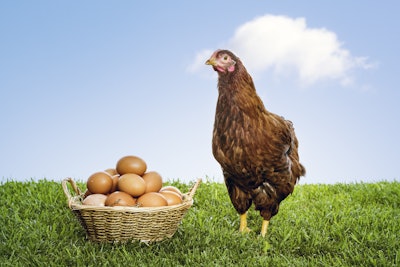
While producers know that mislaid eggs are bound to happen, the question of how to properly handle them remains open-ended. To help answer the question, Egg Industry Insight spoke to Deana Jones, PhD, Research Food Technologist.
Choosing how to handle mislaid eggs is a risk/reward scenario, and each producer must decide how they want to handle them depending on their housing system and process flow.
“The choice depends on the comfort level of the producer and the way they are producing their eggs. The process flow is going to be different from farm to farm,” Jones said.
“Data shows there are different bacterial populations associated with these mislaid eggs, especially on the floor. There is often a higher incidence of visible soiling on mislaid eggs, which can be more microbiologically diverse.”
Variables
For food safety programs, it comes down to what is coming into the egg processing facility and if it is an inline or offline operation.
In inline facilities, eggs are usually packaged or broken less than 24 hours after being laid. In offline facilities, there is a greater opportunity for the interior of extremely soiled eggs to become contaminated, due to the porous shell, if processing is delayed. A processor’s food safety program may need to change depending on that variable, Jones said.
Additionally, processors must think about how often mislaid eggs are being collected in the houses.
“The safest way to approach this variable is assume the worst-case scenario and presume that the mislaid eggs were not immediately collected, meaning the highest level of precaution should be taken when those eggs are being processed,” she explained.
A company may decide that it’s okay with mislaid eggs entering the process flow. Treating 100% of the eggs coming in like they’re mislaid by adjusting the washing process, for example, could be a solution to address the concern.
Another variable to consider with mislaid eggs in cage-free housing is the level of pest activity.
If pest activity is high, the birds could potentially be interacting with the pests, pests could be travelling across the floor substrate. A risk analysis would need to be completed with this factor in mind.
“Food safety programs or risk analyses should not be a fix it and forget it kind of situation. You need to understand what’s going on in your barns and adapt to that,” Jones concluded.




.jpg?auto=format%2Ccompress&fit=crop&h=167&q=70&w=250)











